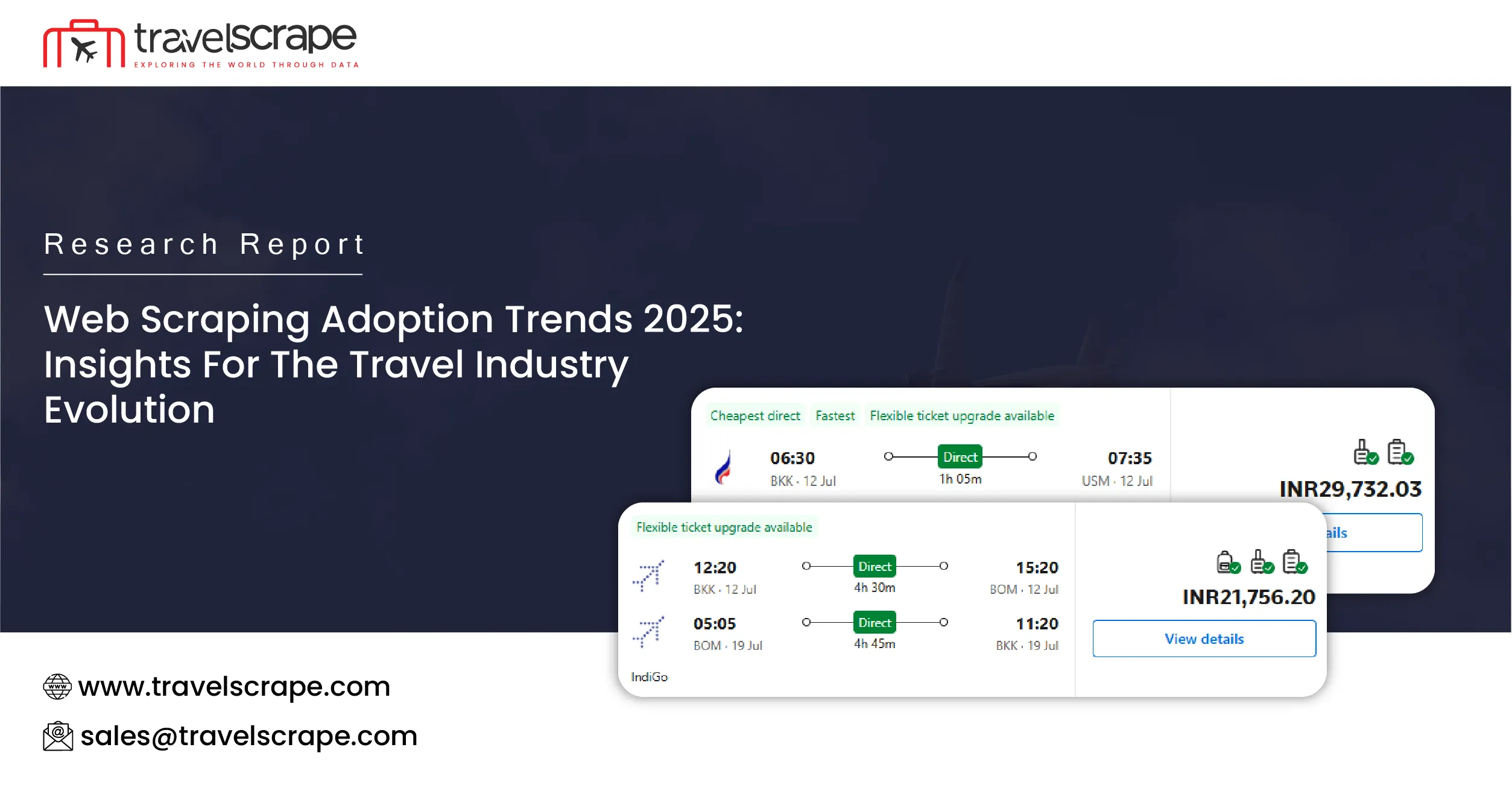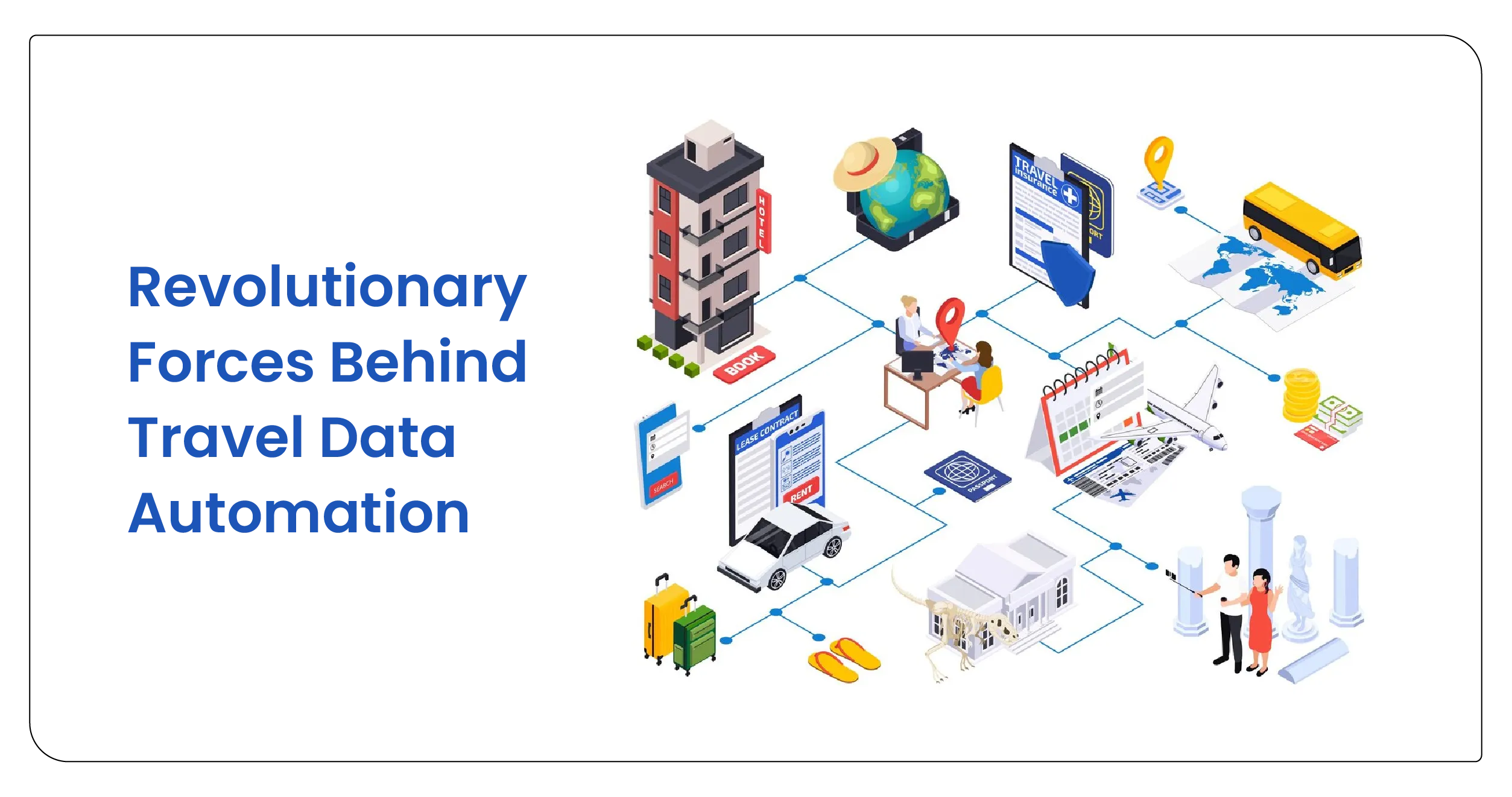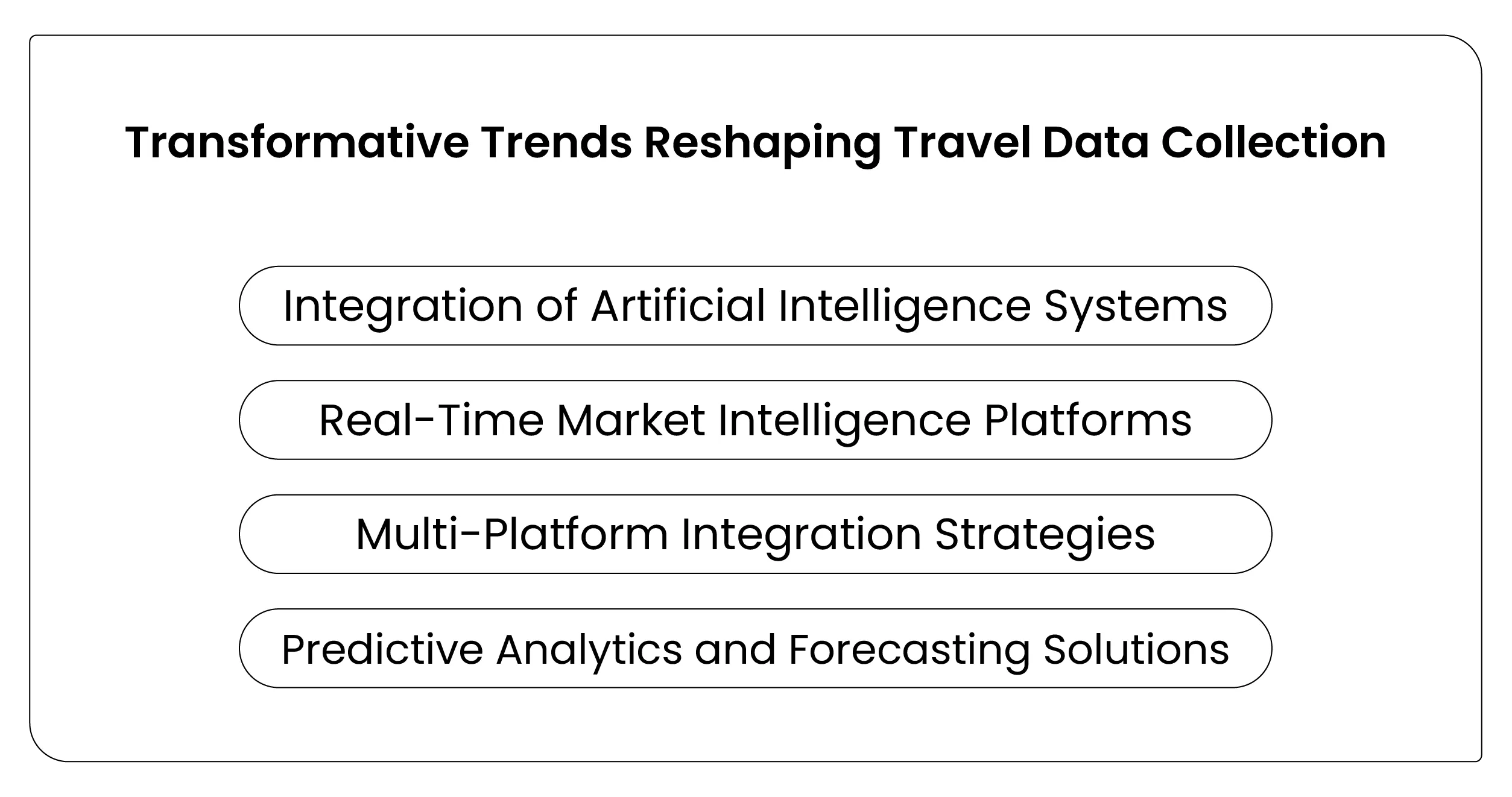Web Scraping Adoption Trends 2025: Insights For The Travel Industry Evolution

Introduction
The The Web Scraping Adoption Trends 2025 report comprehensively analyzes automated data extraction technologies revolutionizing the travel industry landscape. Based on an analysis of over 85,000 travel websites and platforms, this report utilizes advanced monitoring systems to provide crucial insights into Travel Industry Web Scraping Adoption patterns. The objective is to offer valuable intelligence and strategic guidance for airlines, hotels, car rental companies, and travel agencies seeking to leverage automation for competitive advantage in rapidly evolving digital markets. By examining adoption metrics and implementing Real-Time Travel Data Extraction solutions, businesses can optimize operational efficiency and respond effectively to market dynamics.
Revolutionary Forces Behind Travel Data Automation

Primary catalysts include post-pandemic digital acceleration, increasing demand for real-time market intelligence, and the growing implementation of AI-powered analytics platforms. Airline Data Scraping Adoption enables carriers to monitor competitor pricing strategies, track route performance, and optimize revenue management through continuous market surveillance.
This empowers airlines to execute dynamic pricing adjustments based on demand forecasting, seasonal variations, and competitive positioning. Hotel Data Scraping Adoption gives hospitality businesses granular insights into occupancy rates, competitor pricing strategies, and guest satisfaction metrics across multiple booking platforms.
Car Rental Data Scraping Adoption facilitates fleet optimization and location-based pricing strategies while sophisticated forecasting models predict market trends for enhanced decision-making capabilities. These technologies are fundamental to understanding current market dynamics, as they process historical data patterns to anticipate future opportunities and streamline revenue optimization processes.
Research Methodology and Data Collection Framework
This section outlines the structured process of extracting and analyzing large-scale travel data using OTA Data Scraping Adoption techniques to generate actionable insights across global travel platforms.
| Metric | Value |
|---|---|
| Total Travel Websites Monitored | 85,000+ |
| Countries Covered | 100+ |
| Data Points Extracted | 350 Million+ |
| Average Extraction Accuracy | 98.7% |
| Platforms Analyzed | 250+ |
| Structured Data Collected | 15+ Terabytes |
| Automation Growth Rate | 70%+ |
| Parameters Tracked | 120+ |
| Scraping Operation Frequency | 24/7 Real-Time |
Transformative Trends Reshaping Travel Data Collection

An evolving landscape of technological innovation, regulatory compliance, and operational efficiency demands is redefining how travel companies approach market intelligence gathering.
- Integration of Artificial Intelligence Systems
With increasing emphasis on intelligent automation, travel companies implementing AI-powered scraping solutions are experiencing enhanced data accuracy and processing efficiency. Advanced machine learning algorithms enable automated pattern recognition and predictive analytics, significantly improving strategic decision-making capabilities.
- Real-Time Market Intelligence Platforms
One of the most significant developments involves Cruise and Ferry Data Scraping Adoption, which enables maritime operators to implement dynamic pricing models. Companies leverage continuous monitoring systems to track competitor strategies, seasonal demand fluctuations, and route optimization opportunities.
- Multi-Platform Integration Strategies
Travel businesses prioritize comprehensive data aggregation across multiple channels, seeking unified intelligence dashboards that provide holistic market visibility. Travel Aggregator Web Scraping Adoption demonstrates how companies consolidate diverse data sources to create strategic competitive advantages.
- Predictive Analytics and Forecasting Solutions
Artificial intelligence and machine learning integration are revolutionizing strategic planning in travel operations. Utilizing advanced algorithms incorporated into Travel Data Intelligence systems, operators can more effectively anticipate market shifts and optimize pricing strategies.
Table 1: Web Scraping Technology Adoption Metrics by Travel Vertical 2025
| Travel Vertical | Adoption Rate | Cost Reduction | Processing Speed (req/sec) | API Integrations | Monthly Queries |
|---|---|---|---|---|---|
| Airlines | 89% | 67% | 2850 | 147 | 185.6 |
| Hotels | 84% | 72% | 2200 | 203 | 156.8 |
| Car Rentals | 78% | 58% | 1650 | 98 | 89.2 |
| OTAs | 96% | 81% | 3400 | 342 | 267.9 |
| Cruise Lines | 73% | 52% | 950 | 76 | 42.3 |
| Travel Aggregators | 93% | 74% | 3100 | 289 | 234.7 |
Description
This table illustrates comprehensive adoption metrics across travel industry verticals. OTAs demonstrate the highest adoption rates and cost reduction achievements, while airlines show superior processing speeds. API integration numbers reflect platform connectivity complexity, and monthly query volumes indicate the operational scale of automated data extraction systems.
Strategic Opportunities and Implementation Challenges
- 67% of travel firms deploying Real-Time Travel Data Extraction report faster decision-making and improved market responsiveness.
- 72% of companies utilizing Hotel Data Scraping Adoption achieve enhanced pricing accuracy and competitive benchmarking.
- 59% of organizations face ongoing challenges with maintaining data quality at scale in automated scraping environments.
- 48% cite regulatory compliance across global markets as a significant implementation barrier.
- 63% of early adopters see improved operational efficiency through integrated multi-platform scraping frameworks.
- 41% of businesses lack the internal technical infrastructure to adopt real-time extraction systems seamlessly.
Table 2: Travel Industry Web Scraping Evolution Metrics 2025
| Scraping Platform | Success Rate (%) | Daily Extractions | Error Reduction | Uptime (%) |
|---|---|---|---|---|
| Enterprise APIs | 97.2 | 485 | 78% | 99.6 |
| Cloud Solutions | 94.8 | 327 | 65% | 98.4 |
| Custom Frameworks | 91.5 | 189 | 52% | 96.9 |
| Hybrid Systems | 88.3 | 156 | 47% | 95.8 |
| Open Source Tools | 85.7 | 98 | 38% | 94.2 |
Description
This table showcases implementation metrics across diverse travel technology platforms. Airline booking systems demonstrate the highest implementation costs and success rates, while travel comparison sites achieve superior efficiency gains. Active deployment numbers reflect market adoption scale, with automation levels indicating technological sophistication across different platform categories.
Future Evolution in Travel Industry Automation

As we progress through 2025, the travel industry anticipates greater integration of advanced API solutions and sophisticated machine-learning algorithms for predictive market analysis. These innovations will significantly enhance the accuracy of demand forecasting systems, enabling more strategic and data-driven operational decisions.
A rising focus on sustainable tech practices will reshape competitive positioning as companies adopt eco-friendly automation systems. Travel Data Intelligence will play a central role in adapting to shifting market dynamics and evolving cost structures.
Conclusion
As we examine the transformation driven by Web Scraping Adoption Trends 2025, it becomes evident that automation and intelligent data extraction strategies fundamentally reshape the future of travel operations. The expanding role of Travel Aggregators in providing comprehensive, dynamic, and competitive market intelligence redefines how travel services are analyzed, marketed, and delivered across global markets.
Through comprehensive Travel Industry Web Scraping implementations, these trends transform into actionable business intelligence—offering powerful insights into algorithmic market analysis, emerging competitive patterns, and consumer behavior dynamics.
Contact Travel Scrape today to discover how our cutting-edge web scraping technologies can transform your travel business operations and provide the competitive advantage necessary for sustained success in 2025's dynamic marketplace.
.webp)
